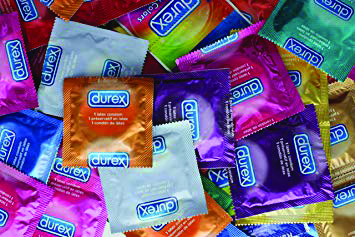How I learned about sex: Sex Ed Matters

Condoms are the most popular form of birth control used
April 23, 2019
One day, in my 9th grade health class, my teacher had us do a condom lab. She split us into groups of four and gave each group a wooden dildo and an unlimited supply of condoms.
We spent the hour learning about the different types of condoms available. I learned that some condoms are lubricated and some are flavored. A few of my classmates taste-tested the mint, strawberry, and chocolate flavored condoms, and they decided that strawberry tasted terrible whereas mint was the best. I also learned if you or your partner are sensitive or allergic to latex, instead use condoms made of polyurethane or polyisoprene.
Condoms made from animal skin may sound adventurous but don’t prevent sexually transmitted infections (STI’s) such as human immunodeficiency virus (HIV). From anatomy, to contraception, to gruesome pictures of STI’s, my health class covered it all. My health teacher was brave enough to hold a condom lab but I realize that not many have experienced the quality or quantity of sex education that I was lucky to have.
Laws about sex education are decided at the state and school district levels. State laws mandate the minimum amount of sex education taught and school districts choose what and how it is teached. According to the Guttmacher Institute, whose specialty is sexual and reproductive health and rights, as of April 2019, only 24 states and the District of Columbia mandate sex education, 34 states and the District of Columbia mandate HIV education and only 13 states require the information taught be medically accurate.
When taught, only half of the states and the District of Columbia require teaching about coercion and informed consent. This lack of sex education about coercion may be what allowed fraternities at Yale to start the spread of the slogan “No means Yes! Yes means anal!” This is frightening to me because choosing to be sexually active is an important decision in life and the definition of consent should be the same across the board.
When discussing sexual orientations, educators in only 12 states are required to be inclusive of different sexual orientations. In fact in Alabama, South Carolina, and Tennessee, it is the law for educators to paint LGBTQ orientations in a negative light. If HIV education is taught in Arizona, it cannot advocate a “homosexual lifestyle” or portray homosexuality in a positive manner. HIV education in Oklahoma teaches that “homosexual activity” is considered to be “responsible for contact with the AIDS virus.” Not only does this negatively affects the LGBTQ community but also ignores the fact that HIV/AIDS can also be passed with heterosexual activity.
According to the Guttmacher Institute, in Mississippi, “localities may include topics such as contraception or STIs only with permission from the State Department of Education.” Yikes! This makes it less amiable for schools and school districts since nobody wants to do extra paperwork to receive that permission.
When schools do teach sex education, some choose to teach Abstinence-Only-Until Marriage programs. These sex-shaming programs ignore the fact that not only they not work but that the average age of first sexual activity is 17 in the U.S. These sex education programs are the programs that are being funded by the federal government. The programs that paint sexual desires as deviant and females as the source of every lustful desire that males get during puberty. Speakers employ scare tactics such as comparing females having sex as a piece of gum being chewed on each time, or a piece of tape that has been moved from one place to another until it has lost its stickiness and is basically slut-shamed. Comparing females who have had sex to chewed pieces of gum is especially harmful for survivors of sexual assault.
Sex education should be learning about anatomy, that sexual activities are not shameful, but natural and that all sexual orientations are acceptable. They need to teach how to have sex safely, how to get access to STI testing, medication and building healthy relationships.







